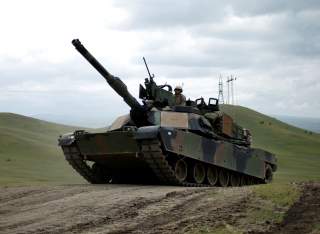China and Russia Beware: How the Pentagon Can Win the Tech Arms Race
The DoD is in need of reform.
Decades of innovation — driven almost entirely by DoD and the Defense Industrial Base — have kept the United States at the forefront of modern military capability. Now, however, it is the commercial sector that is defining the leading edge of technology and innovation. In this information-driven era, the military's conventional models of creating and metabolizing innovation are no longer optimal.
Given the military's need to adopt the fast-paced, innovative, and entrepreneurial practices of the commercial sector to maintain its technological edge, success will depend upon new, more holistic approaches to technology adoption and industry relationships.
New waves of emerging commercial technologies have caused quick advancement within the defense sector. But the effectiveness of these technologies can vary. It is not enough to provide a new capability — the intended end-users must be able to easily leverage that capability, solving the end-users' problems and making their lives easier.
Importantly, they must not only deliver greater security, but they must improve resilience to ensure mission success.
It is not surprising that DoD planning for technology transformation is evolving. Last month at the Association of the United States Army (AUSA) Annual Meeting, Secretary of the Army Ryan McCarthy said: "the intent is to move from the Industrial Age processes to the Information Age, leveraging data as a strategic asset and utilizing private sector technology."
The entire Defense enterprise is going through a similar evolution. To its credit, the department is taking steps to ingest new technologies and accelerate modernization efforts, including creation of the Close Combat Lethality Task Force (CCLTF), Joint Artificial Analysis Center (JAIC), and Army Futures Command; and others pushing new strategies for advancing cloud, artificial intelligence, cybersecurity, and digital modernization. These measures are promising, but it remains uncertain how or even whether these efforts, by themselves, will achieve strategic transformation across the vast DoD bureaucracy.
The military’s ultimate goal is to achieve dominant readiness and to address a wide range of possible future scenarios. But there are countless ingredients and factors that contribute to that readiness — everything from budgets, processes, cultures, and training to innovation and tactics, techniques and procedures (TTPs), and more.
The focus on innovation and transformation must pervade every corner of the enterprise, not just priority modernization initiatives. This means that a truly holistic approach to transformation is needed for the U.S. to keep up. Any such approach will need to include the following components:
An efficient, effective path for collecting, storing, and transforming data from disparate sources into real-time operational intelligence is essential to smart, modern operations and mission success, which is why a data-driven backbone is essential.
Leveraging the power of the cloud
With its unrivaled elastic, scalable, and secure features, the cloud is increasingly the only place where modern and future capabilities can be readily accessed and deployed can be deployed and readily accessed by the warfighter at the tactical edge.
Applied intelligence
With AI, DoD organizations can transform operational data into insight, accelerate and automate decision-making and empower operators with self-service capabilities in new and more intuitive ways.
A talent and partner ecosystem for the future
DoD organizations need to rely upon a talent base that is creative, entrepreneurial, and possesses the capacity to solve problems and continuously learn and adapt to new roles. A new ecosystem of mission partners with their own innovation infrastructures must be able to federate problems and solutions across the enterprise and lead successful digital transformations at scale.
If DoD masters these pillars of a holistic innovation strategy, it can achieve the transformation it envisions and needs at this critical time, becoming an Information Age military that maintains its advantage, and fights and wins in all domains.
MG George Franz (USA, Ret.) is a former director of operations for the U.S. Cyber Command and former commander of the U.S. Army Intelligence and Security Command. He is currently Managing Director and Defense Cybersecurity Lead for Accenture Federal Services’ National Security business. Scott Bachand is a former technical director of operations at the U.S. Cyber Command and the former technical director for cyber at the U.S. Special Operations Command. He is currently a Senior Technical and Cyber Security Associate Director at Accenture Federal Services.
This article by George Franz and Scott Bachand originally appeared at Real Clear Defense. This article first appeared in 2019.
Image: Reuters

